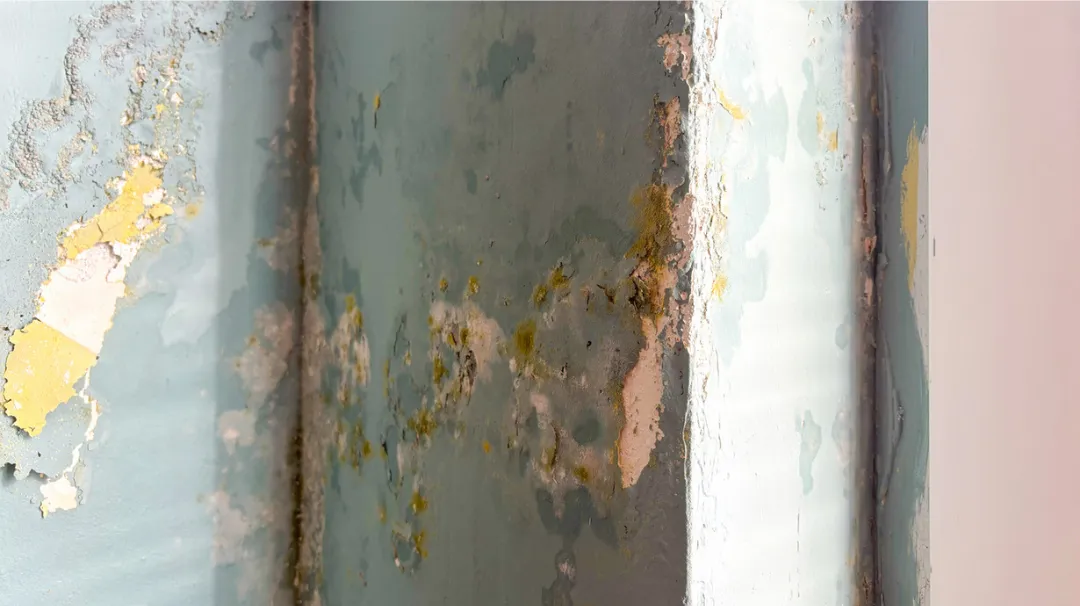
Chaetomium & CIRS: 2-Phase Mold Eradication That Works
If your home or office ever had a leak, flood, or “mystery humidity,” there’s a quiet saboteur you need to know: Chaetomium. It thrives where water meets paper or wood—behind baseboards, inside walls, under carpets—and it can make you feel miserable. When Chaetomium colonizes building materials, it can flood indoor dust with potent cytotoxins that keep sensitive people stuck in the spiral of CIRS (Chronic Inflammatory Response Syndrome).
Chaetomium is a common indoor mold after leaks, floods, or chronic humidity. It often hides behind baseboards, under carpets, inside walls, or on the back of drywall (where paper meets moisture). It can begin to grow within 24 hours of a water leak. If you have a water leak, aggressively dry the area for the first 24-48 hours. After that, do not blow anything on it or you can spread the chaetomium around the home.
If chaetomium is found on a QPCR or ERMI, it should be under 2, ideally.

Chaetomium Metabolites & Mycotoxins:
Chaetoglobosins (A, C ± F): the best-documented indoors. They disrupt the cell’s internal scaffolding (actin).
Azaphilones like chaetoviridins and chaetomugilins: colorful compounds repeatedly found in indoor Chaetomium isolates and on real-world materials; many show cytotoxic activity in vitro.
Chetomin: a potent metabolite that can derail how cells handle stress signals and energy (lab evidence).
Cochliodones: newer markers researchers have detected directly on contaminated building materials—useful clues that Chaetomium is active in the environment.

Cytotoxic means that it can kill or damage human cells. These compounds can interfere with cell shape, communication, and energy production. This invisible mold can wreak havoc in the body, creating a variety of nightmarish symptoms.
No single symptom is diagnostic—and not everyone is sensitive. These are the patterns we see:
Brain & Mood:
Brain fog Word-finding trouble
Headaches or head pressure
Light/sound sensitivity
Irritability or low mood
Energy & Sleep
Crushing fatigue
Non-restorative sleep
Exercise intolerance or post-exertional “payback”
Airway & ENT
Congestion / Sinus pressure
Sore throat/hoarseness
Cough, chest tightness, wheeze (often worse in the space)
Skin & Eyes
Itchy, watery, burning eyes
Rashes, hives, “prickly” skin
Autonomic
Dizziness on standing
Palpitations
Temperature swings
Flushing or “wired-and-tired”
Muscles, Joints, & GI
Aches, stiffness
Bloating
Nausea
Food sensitivities
Reflux
Clue to share with your clinician: Do symptoms improve when you’re away from a particular building—and return when you go back?

How The 2-Phase Mold Eradication Protocol Works
Phase 1 — Bind & Unwind
Train your body to pull out, metabolize, and detox mycotoxins—without the crash.
What it is: A gentle, front-loaded stabilization phase that teaches your system how to mobilize, bind, and clear mycotoxins while turning down the “danger” signals that make people feel worse during detox.
Why it works:
Binds mycotoxins so they don’t recirculate.
Unwinds the nervous system, supporting the parasympathetic nervous system and balance, so your panic button softens.
Opens and supports all of your detoxification pathways to begin lowering the total body burden
Targeted Micronutrients are used in detoxifying mold and mycotoxins, effectively clearing them from the body.
How you’ll feel: mentally clear, improved energy and less reactive. As symptoms soften and go away, you feel confident you are on the path to recovery.

Phase 2 — Kill or Be Killed
Aggressively (but gently) drive down your total mold burden and finish the job—without the crash.
What it is: The decisive phase where we eliminate residual mold-related burdens and clear stored mycotoxins so you can regain your vibrant health. We keep your nervous system calm and your drainage pathways open, so you don’t feel worse while getting better.
What we target (in plain English):
Residual bioburden: If screening suggests sinus or gut involvement, we include targeted antimicrobials.
Biofilm busters: This is where we disrupt the biofilm, opening it so that we can fully eradicate any mold still in the system. The timing of this is critical.
Mycotoxin backlog: Precision binders “catch and carry” what Phase 2 mobilized—so toxins exit the body instead of recirculating.
Mitochondrial Resuscitation: We replete the body with the essential nutrients necessary to perform optimally. Mitochondrial, membrane, and micronutrient support so that you get all of your energy and strength back.

What patients notice as the total body burden falls: brighter cognition, deeper sleep, steadier mood, more exercise tolerance, and fewer bad days.
Our 2-phase system is designed to get you all the way better without feeling worse while doing it—the same approach that’s helped thousands of my patients reclaim clarity, energy, and calm.
If this is ringing bells, you don’t need more guesswork. You need a clear, gentle framework that works with your biology.
Ready to start?
Join the Mold Eradication Protocol—a step-by-step, 2-phase plan that lowers your total burden without the crash. Self-paced modules + live Q&A support.
